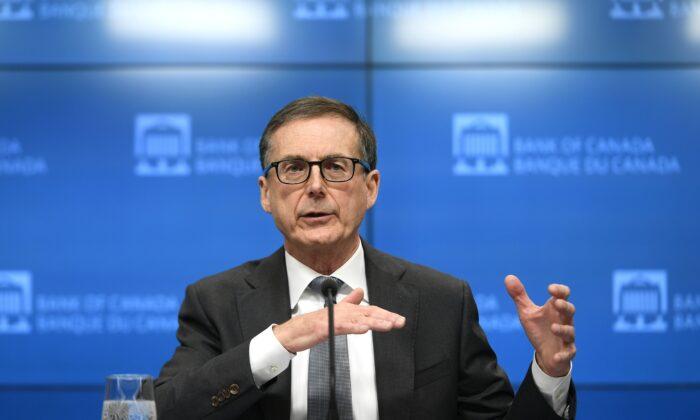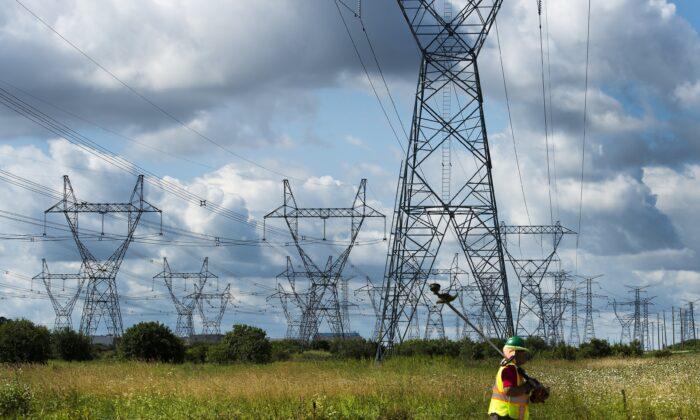The Bank of Canada’s modest rate increase on March 2 will do little to stem inflation, say analysts, who expect more rate hikes later this year.
The BoC’s increase of 0.25 percentage points to arrest increasing inflation brought the rate to 0.5 percent. The hike was widely expected by analysts, even though it’s earlier than the mid-2022 date the bank touted throughout 2021.
Steve Ambler, a retired Université du Québec à Montréal economics professor, says it’s now plainly evident that higher inflation was not a passing “transitory” phenomenon.
“It’s just a gradual recognition or realization that people and the bank itself got their predictions all wrong in terms of how high inflation was going to go and how persistent it was going to turn out to be,” Ambler said in an interview.
‘Be Wise to Prepare’ for Higher Rates
In January, the Bank of Nova Scotia predicted that Canada would see 2 percent interest rates by the end of the year, the only analysis making such a high projection. C.D. Howe CEO William Robson predicts interest rate hikes will reach 3 percent in 2023 to catch up with inflation.“If the Bank’s core measures are good indicators of inflation expectations, a zero real rate currently requires an overnight rate of 3 percent—more than most observers are expecting. If the CPI beats forecasts again in February, March and beyond, the eventual overnight rate could be higher still.”
Ambler says Canada will have to keep pace with rates at the U.S. Fed because a failure to do so would depreciate the Canadian dollar and make imports more expensive.
“If the Fed does do a 50 basis points [increase of 0.5 percentage points] two weeks after the Bank of Canada does 25 [increase of 0.25 percentage points], who knows, the Bank of Canada might wind up playing catch-up,” he said.
“My guess is that they [the Fed] were seriously considering a 50-basis-point increase, but the Ukraine situation has taken that off the table because of the increased uncertainty due to geopolitics.”
In its March 2 press release, the BoC pointed to Russia’s invasion of Ukraine as “a major new source of uncertainty.”
“Prices for oil and other commodities have risen sharply. This will add to inflation around the world, and negative impacts on confidence and new supply disruptions could weigh on global growth. Financial market volatility has increased.”
Macdonald-Laurier Institute senior fellow Philip Cross told The Epoch Times he already expected rate hikes “at every opportunity this year” prior to the invasion of Ukraine. He believes the effect on commodity prices and supply chains will drive already-high oil prices higher still, leaving modest rate hikes unable to stop the momentum.
“Are we so used to zero interest rates in this country that we think there’s going to be an impact from a quarter point increase? Are you kidding? It would take several quarter-point increases to have a measurable impact on things like the housing market, which is just ripping in this country,” he said.
“Very small initial interest rate hikes oftentimes in the past have led people to get off the fence and say, ‘Boy, I’d better buy now before rates go up even more.’ So this is not going to have much of a slowing impact on the economy.”
Western Canadian Select oil is at US$89.31 per barrel as of the morning of March 2, but Cross expects it to soar past US$100. He says Alberta’s expectations for a balanced budget this year show that the oil and gas “powerhouse” is increasingly driving the Canadian economy and suggests even high-end predictions for 2022 interest rate hikes are far too small.
“To me, 2 percent is ridiculous. A normal rate of interest is something like 3 to 4 percent. If we only go back to 2 percent, then we’re still keeping monetary policy loose. I’m really torn here between what I think should be done and what I think the Bank of Canada will do,” he said.
“The greater damage that can be done to the economy is from just sitting back and letting inflation rip. To my way of thinking, the more public pressure on inflation intensifies the more the Bank of Canada has to act.”





